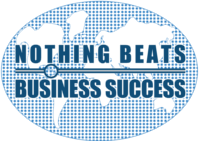“He leads me beside still waters; he restores my soul.” – Psalm 23:2-3
Recently I have been engaged in several discussions at the individual, institutional and country levels, with the recurring theme of chaos. This intuitively suggested the need to shift gears from chaos and despair to harmony and hope. As I began composing this column I thought that I should begin with a few definitions in an attempt to get us all on the same page.
The Oxford Dictionary defines (1) “Chaos” as “Complete disorder and confusion”; (2) “Order” as “The arrangement or disposition of people or things in relation to each other according to a particular sequence, pattern, or method”; (3) “Organised Chaos” as “a situation in which there seems to be a lot of confusion and no organization, which makes you surprised that the results are good”; and (4) “Sustainable” as “Able to be maintained at a certain rate or level”. I am not a proponent of organized chaos because I do not think it is sustainable. I favour the harmonious and orderly arrangement of resources in pursuit of a sustainable path.
In order to achieve this one must engage in strategic visioning leading to a clear Mission statement that will be the beacon to guide us on a sustainable path. A well designed plan is the vehicle in which we travel. A plan has clear objectives, is time specific (which helps to focus the use of our resources), is realistic (which protects against the tendency to pipe dream) and measurable (so that you know when each objective is achieved).
One may be managing a new project either at the individual, institutional or country level. In addition to planning, one must organise the resources at our disposal, garner and select the best human resources to fill the slots in the organisational chart, efficiently lead the implementation of the plan and monitor the implementation performance on a regular basis, taking corrective action as is warranted, so that the annual objectives can be achieved. Where appropriate, we must build a team who will work together in harmony. In this way we may avoid the chaos and move immediately along the path of sustainable success.
Often, however, we find ourselves in or we inherit a situation of chaos and we despair. We are faced with an existing team which may or may not be working together in harmony. The good news is that, whatever the circumstances, we can be led beside still waters and have our souls restored – which gives us the strength to emerge from such a situation of chaos and despair to a state of Divine Order where divine ideas yield positive results when they unfold in their natural time and order. This has certainly been my experience.
A manifestation of the restoration of our souls is to put our minds in action and pursue what I would call a “parallel channel sustainable growth strategy”. The one channel is Visionary where we are in search of Divine Order and the other parallel channel is Chaos from which we need to emerge. Focusing on the Visionary channel will lead us down the path to sustainability but the Chaos channel is the reality and we have to design a methodology and assign resources optimally so that the system gradually emerges from Chaos and moves to Order.
At the individual level, we may have challenges in our lives to overcome which may be leading us down a path of uncertainty and ultimately chaos. We may have been laid off after years of comfortable living and now have to readjust and maybe move from employee to entrepreneur.
At the institutional level, we may experience unexpected competition which may be leading us down a path of uncertainty and ultimately chaos. Our customary sources of revenue may have declined significantly and we have to make adjustments to our costs and seek non-traditional sources of revenue.
At the country level, we may be the victim of the cumulative impact of recession or ineffective public and private sector leadership which may be leading us down a path of uncertainty and ultimately chaos. Our national debt burden may have risen to unmanageable levels where it cannot be comfortably serviced by the size of the economy. Our economic expansion strategies may be slow to emerge and we embark on cutting public expenditure and improving revenue collection systems which further aggravates the system and plunges the deficit to lower depths. In cases like this we need to borrow enough money long term to pay all our debts and have enough money left over to invest innovatively in increasing the economy.
If we get the individuals to emerge from chaos to order then collectively this will help the institutions to emerge from chaos to order. If we get the institutions to emerge from chaos to order then collectively this will help the country to emerge from chaos to order which will ultimately redound to the benefit of the country’s sustainable growth. At each of these levels, we must adopt a “parallel sustainable growth strategy”, the challenge of which is, in many cases, the adoption of a strategic visioning process supported by the necessary financial resources.
There is an important book: “Emergence: From Chaos To Order” where author John H. Holland demonstrates that the emergence of order from disorder has much to teach people about life, mind and organizations.
I encourage all to seek to experience this Divine Order so, collectively, we can propel our vehicles along the path of sustainable success.
Dr. Basil Springer GCM is Change-Engine Consultant, Caribbean Business Enterprise Trust Inc. – CBET. Columns are archived at www.cbetmodel.org and www.nothingbeatsbusiness.com
